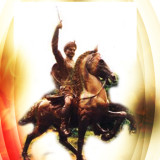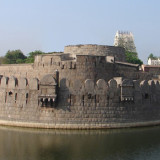The greatest damage inflicted to India by colonialism was the imposition of its academic indology, specifically engineered to distort the original perfect system of varnas and ashramas into a degrading mechanism based on birth prejudice and privilege and modeled after the racist mentality imported by the alien invaders.
In this way, schools both in India and outside India began to teach the superficial, false and misleading equivalence of brahmanas with priests, Kshatriya with military or aristocracy, vaisyas with burgeois merchants or bankers, and sudras with slaves or proletarians. As a corollary, the values and behaviors of western society in the middle ages and colonial periods were artificially superimposed to the varna model, introducing the typically abrahamic idea that the higher classes can legitimately exploit the lower classes, with respectively more rights and less duties, while in fact the varna model was exactly the opposite as the higher classes had progressively more duties and less rights than the lower classes.
The ideological glue to keep this fabrication together was the infamous Aryan Invasion Theory, stating that Vedic civilization and Sanskrit had been brought to the Indian subcontinent by nomadic hordes of Caucasian pillagers assimilated to the Norse/ Viking populations of north Europe, of which the British empire claimed to be the descendent. A fictitious Indo-European culture was thus invented, and in spite of the total lack of historical and archeological evidence, it continues to be presented in many academic institutions and texts as the absolute truth.
Sure, by the time the East India Company landed on the subcontinent, Indian society had already become weaker because of the negative influence of Kali yuga that was expected to reduce the good qualities and behaviors in the natural character of people, but the Vedic social model had a check and balance system and a training syllabus that still enabled the people in the subcontinent to maintain an exceptionally high standard of living, culture and prosperity compared to the rest of the world, well into the first millennium of the present age.
Without the degradation of the caste system, Indian society would have been able to resist colonialism and attempts at conversion by other religions; still today, the absurdity of the degraded caste system, with its absolute birth prejudice, is alienating a large part of the Indian population and the almost totality of the global public opinion from Hinduism and Vedic culture.
To solve such problem it is sufficient to honestly return to the actual version of the genuine scriptures and to the prescriptions for the purification and progress of each member of society, both materially and spiritually, for the benefit of individuals, communities and society at large. The main concern of the Vedic system is indeed the benefit of the society as a whole, symbolized by the Virat purusha in the famous Purusha sukta (Rig Veda 10.90.12).
The failsafe mechanism that kept the varna system working was called by indologists “caste mobiity” and was guaranteed by the threefold social authority of the gurukulas, the assemblies of brahmanas and the kings, who had the independent power to correct social discomfort created by discrepancies between the position of birth (kula dharma) and the actual qualifications of each individual (sva dharma), still within the original blueprint (sanatana dharma) described in the fundamental scriptures, such as Bhagavad gita.
In verse 18.41, Krishna states: brahmana-kshatriya-visam sudranam ca parantapa, karmani pravibhaktani svabhava-prabhavair gunaih, “The duties of the brahmanas, kshatriyas, vaisyas and sudras are categorized according to their specific natures, produced by the gunas (sattva, rajas, tamas)”.
A person who has a kshatriya nature is influenced by sattva with a latent tendency to rajas, and therefore he needs to be trained more strictly to a harder discipline. His natural qualities of heroism, leadership, resourcefulness and generosity are sattvik, but if rajas is not controlled, they can turn into arrogance and thirst for power over people and wealth, deceitfulness, and manipulation of others through corruption and dirty politics.
Therefore the Guru trains the kshatriya students in overcoming selfishness and egotism, through the study of the transcendental science as well as in sacrificing one’s life in defense of the prajas.
The word bhava is very interesting. It contains the meanings of “feeling, sentiment, nature, emotion, nature, development, creation” and refers to the individual evolution through the Vedic path of progress, by which a student is trained to develop higher qualities, behaviors and skills for his own benefit and the benefit of society at large.
In this sense, bhava can also be translated as “potential”, a raw material that will be shaped by the proper application of gunas (modes of existence) and karmas (duties or activities). Verse 4.13 of Bhagavad gita states: catur varnyam maya sristam guna karma vibhagasah, tasya kartaram api mam viddhy akartaram avyayam, “The four varnas have been created by me on the basis of different gunas and karmas, but although I am their maker, know that I am unchangeable and detached from action.”
Verses 18.42 to 18.44 continue to elaborate: samo damas tapah saucam kshantir arjavam eva ca, jñanam vijnanam astikyam brahma-karma svabhava-jam, sauryam tejo dhritir dakshyam yuddhe capy apalayanam, danam isvara-bhavas ca kshatram karma svabhava-jam, krishi-go-rakshya-vanijyam vaisya-karma svabhava-jam, paricaryatmakam karma sudrasyapi svabhava-jam, “
The activities/ duties of the brahmana, determined by his particular nature, are control of his own mind, senses and body, cleanliness, tolerance, simplicity, theoretical and practical knowledge, and living in accordance to Vedic teachings.
The activities/ duties of the kshatriya, determined by his particular nature, are heroism, charisma, determination, resourcefulness, steadiness in battle, charity, sense of leadership. The activities/ duties of the vaisya, determined by his particular nature, are agriculture, protection of the cows/ planet, and commerce.
The activities/ duties of the sudra, determined by his particular nature, are the service and assistance (to others).”
Vaisyas and sudras are grouped up in one single verse because they are less evolved than brahmanas and kshatriyas and therefore they have less duties; the sudras considerably less than the vaisyas.
These professional and social positions are easier to maintain even without making particular efforts to qualify oneself or make lots of personal sacrifices. Therefore it is said that in the age of Kali everyone is born a sudra, because without a strenuous effort and a proper training it is almost impossible to become genuine brahmanas or kshatriyas.
Since we are studying here the characteristics of the kshatriya, let us analyze especially verse 18.43. The word sauryam is closely related to sura (divine beings such as the Devas) and surya, referring to the Sun, and indicates the radiance of majesty, the chivalry and personal power, and invincibility that we associate with the Sun itself. Tejas also means “radiance, power”, and even “heat”, and its meanings overlap with tapah; in fact tejas is created by tapah.
Normally and ideally, sauryam and tejas should be engaged with determination and careful skills in the protection of the prajas, and therefore the two qualities are mentioned in the first part of the verse together with dhriti (determination, patience, endurance, perseverance), dakshyam (skillfulness, resourcefulness, expertise, ability, dexterity) and yuddhe apalayanam (steadfastness and courage in battle).
Just like arjavam (simplicity) and kshanti (tolerance) should not be confused with foolishness and apathy, the characteristics of a kshatriya need to be understood correctly. The expression isvara bhava (“controlling nature”) could also be translated as “lordly attitude” because isvara means “Lord”; a tendency to be bossy is not a bad thing, as it does not mean bullying people around to impose one’s will over others whimsically.
If the bossy individual is qualified and properly trained, and capable to lead, direct and manage others, society should appreciate this quality and use it to its benefit instead of resenting it on the basis of a delusional belief in the complete equality of all human beings.
The only equality that should exist in society is equal access to opportunities to qualify oneself; according to the particular nature (talents and tendencies, or guna and karma) of each individual, some people will become more qualified for some particular duties, and some will be more suitable for other duties, and some others will always need to be told what to do and depend on others for their protection and maintenance.
Of course respect and obedience are to be commanded, not demanded. A true leader shines for his own value and charisma (tejas, saurya) and naturally inspires faith and loyalty in good people.
A true Kshatriya is always on the front line, before anybody else, in the thick of the battle, and is the best example to follow. He works harder and longer hours than anyone else, and is ever ready (24 hours a day, 7 days a week) to sacrifice his own sense gratification, comforts, possessions, position and personal life (by living and by dying) for the sake of the kingdom and the prajas – whether the kingdom is a large country or a village, a neighborhood or any group of people who look up to him for guidance.
A true Kshatriya takes responsibility not only for his own failures but also for collective defeats, inspires and encourages others and helps them to rise and progress to become qualified leaders in turn. He demonstrates concern, care and affection for the prajas just like a good father behaves with his children, engages them happily and appropriately, and always watches over their well-being, over and above his own immediate family and relatives.
If a Kshatriya expects to be obeyed in his orders to people about what they should do, it is because he knows what he is doing; he is daksha, “expert”, as his training has taught him the sciences of war strategy, social management and resource administration.
The word dakshyam also indicates resourcefulness, that is the ability to face new unforeseen situations and to adapt one’s approach smoothly. Generosity and charitable disposition (dana) are his natural qualities, therefore people are not afraid they will be exploited or mistreated in any way; rather, because he is never afraid to stand for justice and protection of the subjects (yuddhe apalayanam), people feel safe in his presence and seek his help and protection. The qualities called sauryam and tejas are similar to each other.
The word dhriti, especially in this context, could also be translated as “grit, resolve”. It indicates the strong determination of the warrior, who firmly faces any difficult situation or loss and even death, and when he is wounded and unable to stand, he continues to fight even on his knees.
However, this determination should not be confused with the stupid stubborness of tamasic people that are attached to some particular action or belief or underestimate dangers; the kshatriya has a clear vision of the situation but he chooses to sacrifice himself for the protection of the prajas if this is required, because that is his duty.
He is never depressed or dogged down, as this is considered a contamination (kasmalam, 2.2), a sign of impotence (klaibyam, 2.3) and a “weakness of the heart” (hridaya daurbalyam, 2.3) that is unworthy of a civilized person (anarya justam, 2.1), a cause of infamy (akirti karam, 2.1) and an obstacle to one’s elevation (asvargyam, 2.1).
Of course these qualities cannot be expected from everyone, and even in a person who has the genuine talents and inclinations for the role of kshatriya, these must be developed through appropriate training and experience, so aspiring kshatriyas should not feel discouraged at their shortcomings.
Similar to dhriti is apalayanam, “not fleeing”, referring to the steadiness in battle and heroism in spite of adversities; this quality or characteristic is not demonstrated only on the battlefield but in all aspects of daily life, in the small and the big things. Kshatriyas are educated and trained in strategy and diplomacy in dealing with the enemy – the first attempt is sama, treating the opponent like a friend and allowing sufficient space for his livelihood and prosperity, the second is dana, trying to win them with peace offerings and gifts, the third attempt is bheda, trying to break up hostile alliances and facing one enemy at the time, and only as a last resort one should resort to danda, punishment as in taking physical action against the offender.
This brings us to another very important clarification. The main job of a kshatriya is fighting to protect the prajas, because that is his natural inclination and the best use of his qualities, as Krishna has stated specifically
: sva dharmam api caveksya na vikampitum arhasi, dharmyad hi yuddhac chreyo ‘nyat ksatriyasya na vidyate, yadricchaya copapannam svarga dvaram apavritam, sukhinah ksatriyah partha labhante yuddham idrisam,
“Considering your own dharmic duty you should not hesitate, because for a kshatriya there is nothing better than fighting a dharmic battle. O Arjuna, happy are the kshatriyas to whom such opportunity comes unsought. For a warrior, engaging in such a battle is like having the doors of heaven open in front of him.” (2.31, 2.32).
This will also be confirmed again in verse 18.59. However, the warrior spirit of a kshatriya is not the war mongering, blood lust, and cruelty of the asuras; he is not a brawling bully and he avoids confrontation and conflict if there is any other option still possible, as the Pandavas demonstrated in practice in their dealings with the aggressive Duryodhana and his brothers.
Besides, there is a specific code of conduct for kshatriyas; non-combatants should never be attacked or harmed, and property that is not directly connected to the fighting should not be destroyed; for example, the encampments where the warriors retire for the night are not to be touched. Even on the battlefield a warring enemy should not be attacked if he is unprepared, unarmed, distracted, distraught, or if he admits defeat.
Sometimes unqualified persons pose as kshatriyas, but they should be exposed and neutralized by genuine kshatriyas or brahmanas; they are described as nripa linga dharam (merely showing the appearance/ insignia of kings).
Here is a description of the unqualified kings of Kali yuga: stri bala go dvija ghnas ca, para dara dhanadritah, uditasta mita praya, alpa sattvalpakayusah, asamskritah kriya hina, rajasa tamasavritah, prajas te bhaksayisyanti, mleccha rajanya rupinah,
“These mlecchas in the form of kings will be killing/ injuring women, children, cows/ the planet and the twice born, and going after the wives and wealth of others.
They will be mentally and emotionally unstable, rather weak mentally and physically and short lived. Covered by rajas and tamas, they will not perform any proper duty or auspicious ritual, but they will devour the prajas.” (Bhagavata Purana 12.2.39-40).
From the teachings and examples offered by the shastra we can therefore understand who is a kshatriya and who is not; in this regard we also need to remember that in times of emergency (apat kala) all the members of society were called to defend it even on the battlefield against external and internal aggressors.
Brahmanas usually oversaw the strategies and sometimes fought in the battle, vaisyas not only contributed wealth and supplies but could also fight with weapons according to their abilities, and sudras also participated, most often as charioteers and order carriers but also as foot soldiers.
In Vedic society everyone is implicitly authorized to defend himself and his family, subordinates and property from such aggressors. Therefore there is no need for jails, lawyers or even judges or police like in the present faulty system that is very prone to judicial mistakes and abuses.
We need to understand that an army soldier or a policeman is not automatically a kshatriya, especially when he is unable or unwilling to take the required initiative to protect the prajas. A true kshatriya does not wait for anybody’s orders to stop aggressors, and is directly and personally responsible for the physical protection and well being of the prajas.
However, a kshatriya only concerns himself with precisely this task, and is never expected to invade the field of religious beliefs and worship practices, that is exclusively entrusted to brahmanas, who can only offer teachings and never enforce them physically or materially in any way.
Vedic civilization does not mistake dissenters for enemies, and does not interfere with the individual’s private life, professional occupation, beliefs, or freedom of expression. It also does not interfere with the private level of sexual “morality” of people, except of course in case of sexual aggression, that falls into the category of aggression and violence.
The government (the kshatriyas) intervene only when an individual is subject to an aggression that s/he is unable to prevent or stop – this is the true demonstration of the famous motto “to serve and protect”.
There is no need for the government to issue or enforce many laws and rules to restrict the liberties of the people: the only thing that the government/ kshatriya/ police should do is to protect the people (harmless human beings and harmless animals) from any form of violence.
Any individual has the right to fight back all categories of aggressors (atatayinah), that are those who attack with any type of deadly weapon, or who set fire to a house, give poison, attack (rape or abduct) a girl or woman (or children), break into a house to steal or destroy/ damage property, or encroach land or property.
Thus any individual has the right to own suitable defensive weapons and is responsible for their proper use, but if s/he is not able to defend him/herself sufficiently, s/he is entitled to the protection of the kshatriyas.
The definition of dharma yuddha (“fight for dharma”) should never be assimilated to the typically abrahamic concept of “holy war” or “religious war” by which a political entity (king, khalifa, pope, etc) intends to subjugate people or nations in order to impose a particular type of belief, religious tradition, mode of worship, culture, values, legislation, or to acquire the control of resources for selfish purposes, by taking them away from other people.
A dharma yuddha is a battle conducted according to strict ethical rules of engagement and with the purpose to protect the good, harmless and innocent people from the attack of aggressors and evil doers.
According to the Vedic rules for dharmic fight, only active combatants may be attacked in a battle; if the enemy surrenders or is unarmed, unconscious, or unable to fight back, the use of force is condemned as asuric. However, it becomes justified against an enemy that has already broken the ethical rules of combat.
For example, a cunning criminal may pretend to surrender, and then escape and attack again under stealth or deceit: in this case, the kshatriya is authorized to overlook the ordinary rules and deal with the situation as required to protect the prajas. Rules are meant to help and serve us in the performance of our duty, and not the other way around; an honest and wise person can understand how dharma can be better served, as Krishna himself demonstrated several times in the Mahabharata.
Foolish and envious people sometimes claim that Krishna was a clever politician and manipulated the rules to the advantage of his family by resorting to adharma, but if we actually examine the circumstances, the facts and the results we will see that all the persons involved in the action obtained the greatest possible benefit.
A dharma yuddha is always purely defensive, never offensive or imperialistic, colonialistic or exploitative in any other way. In this regard, we need to understand the tradition of the Rajasuya/ Asvamedha yajna celebrated by a king who wishes to rise to the level of “emperor”.
The concept of empire in the Vedic tradition has only administrative purposes, aimed at strengthening communication and cooperation between regions through building roads, encouraging trade, creating a common front against outside invaders and aggressors, and providing emergency support to tributary kingdoms in case of need – famine, natural disasters, etc.
The aspiring emperor celebrated the Rajasuya yajna to verify the qualifications of the local kings and rulers; if they accepted his superiority, they would offer some gifts as tribute. A local ruler admitting defeat was not killed or replaced by the emperor or by the emperor’s men, and did not have to change his personal or tribal/ social beliefs or way of life.
He would continue to rule his own prajas as always, but he knew that there was a man greater and more powerful than him, to whom he could turn for help in times of need.
A kshatriya is not a war-mongering brawler eagerly searching for the opportunity to pick a fight or even creating such opportunity by attacking innocent and harmless people who are just engaged in their own honest and harmless business. A kshatriya is called to defend his land (kshetra) and the creatures of his land (prajas) from all attacks: this is the dharmic fight.
The genuine kshatriyas are capable and active enough to catch a criminal red-handed and either kill him in battle or see him out of the kingdom to be banished forever if he does not accept to reform himself sincerely, atone and repay his victims suitably.
A qualified kshatriya warrior fights and kills the aggressors without being touched by krodha and himsa, because his actions are not dictated by personal motivations. He is not venting his personal problems and frustrations, and he is not seeking any personal advantage in the fight – revenge, elimination of rivals, acquisition of a better status. He is just stopping the aggression and protecting the prajas.
Thus a dharmic fight always remains on the level of sattva or visuddha sattva even if it becomes “violent” or “angry”. Shouting, throwing weapons, or even cutting bodies to pieces are not necessarily a proof of anger or violence, and they should certainly be employed when the circumstances require it for the protection of the good and the innocent.
The only concern of kshatriyas is to protect the prajas and the kingdom from aggressors, from the criminals that try to commit violence against others. In this work, there is no need for many laws – good people will behave properly without being forced by laws, and bad people will always try to get around the laws to commit their crimes. The only principle that the King needs to apply is to stop aggressors.
Not even punishing them, as in the Vedic system there are no prisons or courts or lawyers: if the criminal surrenders and repents, he is either pardoned or banned, depending on the seriousness of his crime. It does not matter what these aggressors profess to believe, even if they think that God has ordered them to rape and murder innocent people and pillage or steal properties, the kshatriya is only concerned about the act in itself, the rape and the murder and the stealing.
The king has the duty to stop aggressions and violence, and he does that without leaving much space to the rationalization that the criminals may try to offer to justify their bad actions. The truth of the facts is that there is no justification whatsoever for aggression and unethical actions, and each and every arya, or civilized person belonging to the Vedic society, has the duty to step in and make the aggression stop, with whatever means the situation requires.
Ahimsa is a compound word consisting of the “privative” a, and the noun himsa, of the same root of the verb himsati, “to hate”. The usual translation of “non-violence” is therefore rather simplistic, as it does not explain how a kshatriya can remain perfectly situated in ahimsa while he is doing his job of protecting the innocent and good prajas from the aggression of criminals.
Coupled with the mythical vision that many uninformed people have about the policies of MK Gandhi, often called “the apostle of non-violence”, as well as about the history of India in the last 1200 years, this imprecise rendition of the Sanskrit concept of ahimsa can really cause serious misunderstandings.
We need to clarify that the Vedic idea of ahimsa is not cowardice, absenteeism, irresponsibility, callousness or the delusional hope that “evil” will simply disappear if we choose not to look at it. Real ahimsa is directly connected to samata or equanimity: it is about being free from prejudice and hatred, and about looking straight at reality to take the required measures without any selfish motivation.
Another important quality listed in Bhagavad gita as characteristic of the kshatriyas is dana, charity. Here we should clarify that political charity (including political charity dressed as religious charity) is meant to create or reinforce vote banks and is certainly not selfless, therefore it will not bring good results.
On the contrary, it will encourage the general people to become irresponsible and depending on handouts, developing a beggar’s mentality when instead they could work honestly and take care of themselves and their own subordinates. In extreme cases, such political beneficiaries will even become arrogant and demand special privileges as in the notorious “reservation system” enforced in India to favor the so-called “minorities” without any consideration of merit or need.
The Government’s duty (the King’s duty) is to engage everyone in their own appropriate sva dharma according to their individual guna and karma, and support them in developing their true potential. The first foundation for this work is the concept of dharma, or selfless work performed to support society. Without teaching this concept in theory and practice (through the example of the srestha, as mentioned in verse 3.21), a Government is simply a failure.
Government people and leaders must be shown as having very specific professional duties and fulfilling them in the proper spirit, otherwise no legislation or scheme will ever improve the conditions of society. More laws will only create more difficulties to good people, because of the bureaucracy involved and the blind restrictions that can easily be exploited by ill-motivated people, and corruption can only increase.
Good people do not need laws in order to behave properly, and bad people will always find a way to circumvent the laws or will even break the laws regardless of the severity of the punishment promised. In fact, too many laws will keep the Government servants busy with petty matters while criminals remain free to commit any aggression or damage, protected by shameless lawyers and corrupt police and magistrates.
by Parama Karuna Devi
Those who are interested to read more on the subject of Bhagavad gita are invited to obtain a copy of the translation and commentaries by the author, Parama Karuna Devi, available on Amazon.
(11395)
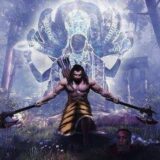
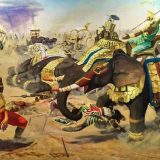


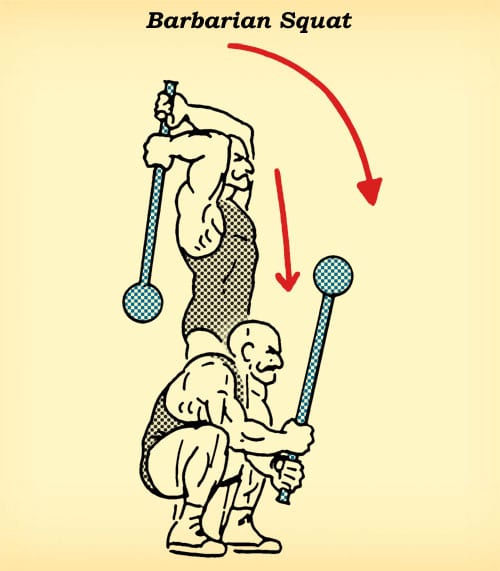



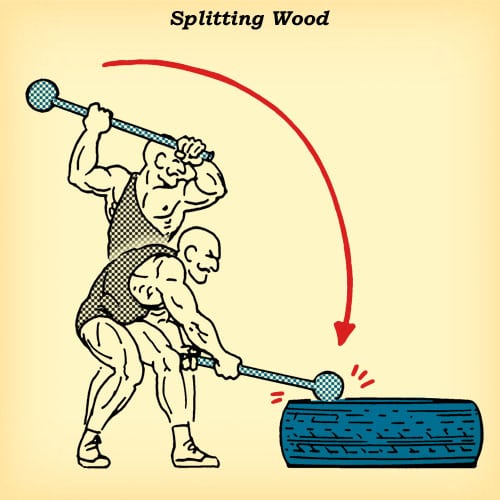


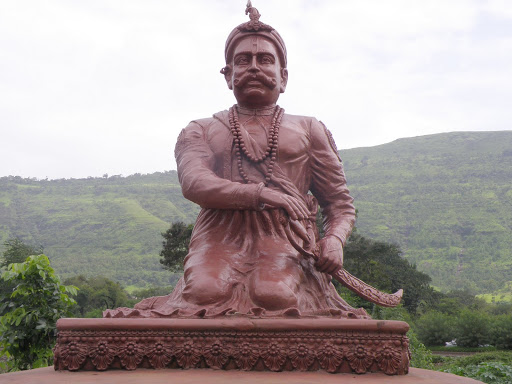








 The person I refer to is known as Girish Shahane, who by his own account is the proud owners of multiple degrees from various institutions including Oxford University – we presume he means the world famous Oxford University as opposed to Oxford International College which was apparently recently closed by the Department of Further Education in the United Kingdom due to violations of the Immigration rules.
The person I refer to is known as Girish Shahane, who by his own account is the proud owners of multiple degrees from various institutions including Oxford University – we presume he means the world famous Oxford University as opposed to Oxford International College which was apparently recently closed by the Department of Further Education in the United Kingdom due to violations of the Immigration rules.














